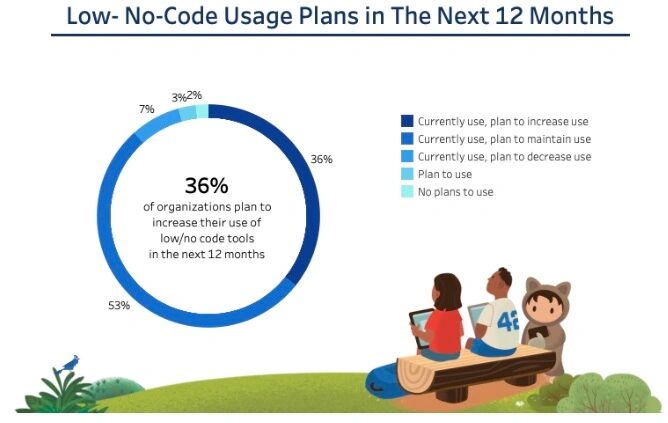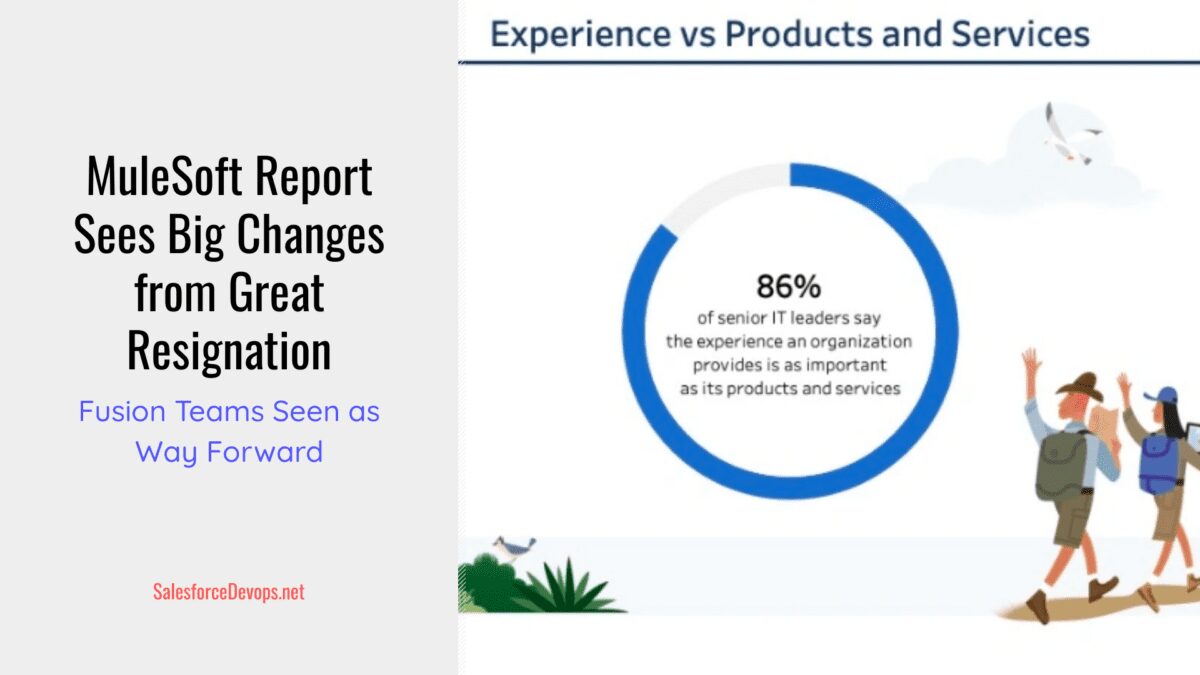MuleSoft Report Sees Big Changes from Great Resignation
MuleSoft, a division of Salesforce, today released an international research report based on a recent survey of 1,000 information technology (IT) leaders. The study seems to reinforce a truism in IT, which is that every big enterprise is transforming into a digital information and software company. And it points out how companies are struggling to make their efforts successful due to lack of talent. “Today’s IT leaders must look instead to broader, company-wide process improvements, through automation, that foster innovation, enhance user experiences, and drive efficient growth,” said Matt McLarty, global field CTO for MuleSoft in a press release.
The Great Resignation Isn’t Over
Nearly all the 1,000 respondents (98%) said that “the Great Resignation has created skills gaps in their organization’s IT function, primarily with IT and solutions architecture (60%), and cloud and infrastructure management (45%). And it doesn’t seem like companies have found any good solutions to the problem yet.
Apparently, the pandemic has created a new sense of worth in IT workers and they are no longer putting up with doing work they hate or have no clue as to why they are doing it. One headline from the report is “IT talent acquisition pressures are shaping technology investment decisions.” This is backed up by 87% of respondents saying, “investing in people is hugely important.” And 82% of respondents plan on “investing in employee’s wellbeing.”
But There Is a Plan
Most of the IT leaders surveyed subscribe to the “every company is now a software company” truism. 86% of respondents agree that “improved customer-facing technology is critical for their organization to compete.” And 85% of respondents agree that “improved employee technology is critical for their organization to compete.”
To deal with the skill gap and still compete, 60% of respondents plan on investing in new technology solutions. And 58% of respondents said they plan on implementing new automation systems.
One kink in the plan seems to be that 98% of respondents are willing to adjust their technology investment decisions based on talent acquisition. This seems like companies are looking for new IT leadership who come pre-equipped with the skills and knowledge to bring in a new technology stack.

The report has some mixed data on the use of low code tools. When asked if their organization had plans to use low code tools, only 36% of respondents said they currently use low code and plan to increase it. And a whopping 53% said they currently have no plans to increase the use of low code tools!
Team Topologies Management Style Growing in Adoption
Most IT thought leaders today encourage IT management to think in terms of permanent functional teams. Permanent functional teams are dedicated to shepherding and operating digital products from conception through production. And the idea of encouraging continuous learning and scientific measurement of work is growing. This is usually expressed as instilling a devops culture. Much credit for these management advances goes to the authors of Team Topologies: Organizing Business and Technology Teams for Fast Flow (link) and Gene Kim, lead author of The DevOps Handbook (link).
The MuleSoft research confirms the impact of these key influences. The report defines Fusion Teams to be “multi-disciplinary teams that blend workers with technology, analytics, or domain expertise and who share responsibility for business and technology outcomes.” The survey found that 28% of respondents already have created fusion teams. And 63% of respondents said they are starting or planning on using fusion teams in the next 12 months.
The research found that most respondents found fusion teams to be successful. And 63% of respondents said that fusion teams have helped their business meet their goals. I also had a chance to opine on the subject with Matt McLarty over email today. I asked how much he feels businesses are aligning with the ideas behind devops and Team Topologies.
“As software-based digital solutions become more central to every company’s business, we see the culture of software delivery influencing these organizations. Agile’s emphasis on getting closer to the customer and DevOps’ focus on collaboration and empathy across organizational boundaries are both being embraced by organizations who are succeeding in the digital economy” said Mr. McLarty in our email exchange.
“In fact, I see a dynamic where the old business-IT divide–which mirrors the Dev-Ops divide that DevOps bridges–is closing. More organizations are recognizing the need to establish fusion teams for business and IT stakeholders, or even moving to an Amazon-like “Product Organization” featuring cross-functional product teams, platform teams, and enabling teams (as described in Team Topologies),” Mr. McLarty continued in our email conversation.
MuleSoft Report: IT Leaders Are Looking for Solutions
It seems that after two decades of neglect, IT workers have finally found their voice and won’t stand for bad management or poor working conditions anymore. This MuleSoft/Salesforce report confirms that IT management has woken up to the problem and wants to do something about it.
The Team Topologies, or fusion teams, approach makes sense if one manages the boundaries properly. And automation plus devops continue to be key underpinnings for any technology overhaul.
This report, plus everyone’s personal observations, confirms we are truly in a new world of work. The pandemic was a historic inflection point in enterprise IT, and we are still struggling to figure it all out. New mentalities and thought patterns are now required to attract and retain the talent your organization needs. This new report from MuleSoft and Salesforce, plus the two books referenced above, is recommended reading for those leaders who still require a confirmation.






